“Steve, how many calories should I eat every day? I got goals, son!”
Great question!
Knowledge is power, so today, we are going to make you more powerful.

First off, we’ll discuss your Basal Metabolic Rate (BMR) and your Total Daily Energy Expenditure (TDEE), which are fancy terms for how many calories you require on a daily basis to exist.
I’ll even give you two calculator options below – to determine your personal BMR and TDEE – plus I’ll show you how to use this information.
We’ll end today’s article by giving some practical advice on calorie requirements and weight loss, including a step-by-step plan, because I’m nice like that.
Let’s do this!
THE NERD FITNESS TOTAL DAILY ENERGY EXPENDITURE CALCULATOR
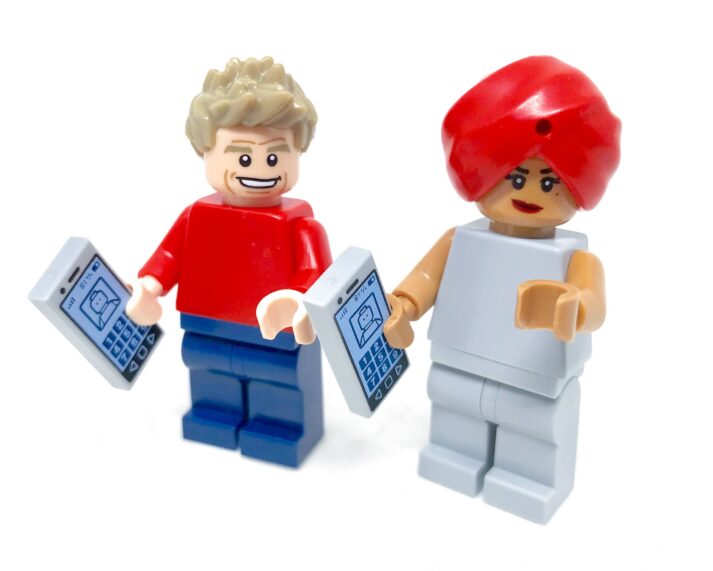
We’re going to start off by doing some math.
Don’t worry though, our robot calculator (beep boop boop) will do all the hard stuff for you.
We will need to know your height in inches, your weight in pounds, and an idea on your activity level (Use the metric system? I wish we did too here in the States! Click right here for our Metric calculator).
Although you can adjust it, I want you to set your “Activity Level” as “Sedentary,” (I’ll explain why in a minute):
Nerd Fitness Total Daily Energy Expenditure Calculator
(Note: we have used the The Mifflin-St Jeor Equation to create this calculator! [1])
Hooray! You now know your BMR and TDEE!
You may be thinking, “Ah, Steve, what do either of these mean?”
I got you boo. Make sure you write down your two numbers.
WHAT IS BASAL METABOLIC RATE (BMR)?
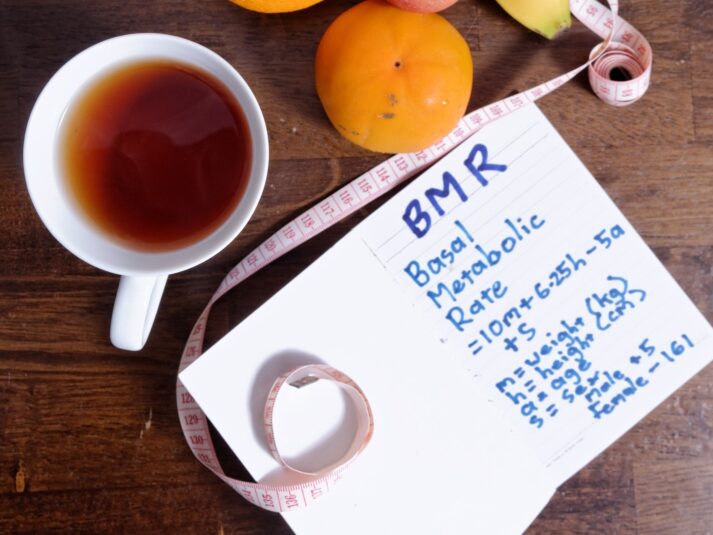
Basal Metabolic Rate (BMR) is the total amount of calories needed to keep you alive.
Breathing, cell production, pumping blood, and keeping your body temperature up all require calories to function.
When you sit perfectly still, you use plenty of calories keeping your body in good working order.
“Basal” more or less means “basic,” so you can think of BMR as the number of calories needed for basic daily functions.
Your sex, weight, and height will all affect the number of calories you need, which is why they are variables in our equation above.
The taller you are, or the more you weigh, the higher your BMR will be. There is simply more of you that needs calories. More blood to pump, more cells to produce, etc.
Roughly two-thirds of the calories you need each day go into keeping your body running.
The other third?
That goes into powering your motion. Because going from one place to another requires calories from your body. So does lifting stuff.
Let’s talk about Total Daily Energy Expenditure (TDEE) next.
WHAT IS TOTAL DAILY ENERGY EXPENDITURE (TDEE)?

Total Daily Energy Expenditure (TDEE) is an estimate of how many total calories you burn in a day.
Since your BMR calculates the calories you need for a state of rest, we need to factor in movement and exercise to get an idea of how many calories you burn each day.
To do this, we’ll take your BMR and multiply it by an “Activity Level” factor.[2]
Activity Levels can be thought of as the following:
Sedentary. You get up to tell Netflix you are still watching. You don’t intentionally exercise at all.
Sedentary = BMR x 1.2
Lightly Active. You casually stroll through your neighborhood a few times a week. On average, you walk for exercise about 30 minutes a day. Another way to think about this would be 15 minutes per day of vigorous exercise like jogging or lifting weights.
Light Active = BMR x 1.375
Moderately Active. If we called the gym on a weeknight looking for you, they’d find you. This averages out to about one hour and 45 minutes of walking (for exercise, not going around your house) a day, or 50 minutes of vigorous exercise.
Moderately Active = BMR x 1.55
Very Active. You work in construction during the day and you’re on the company softball team. This averages out to about four hours and 15 minutes of walking (again, for intentional exercise) a day, or two hours of vigorous exercise.
Very Active = BMR x 1.725
If you’re following along at home, you may notice that different Activity Levels can make a big difference for the calories burned.
Let’s use some numbers:
Suppose you’re male, 35 years old, weigh 200 pounds and are six foot even (72 inches).
You’re also wearing a Nerd Fitness Shield Tee and it looks great on you. It really brings out your eyes.
Awesome shirt or no awesome shirt, we know your BMR comes in at 1,882 calories given the variables we identified. Which means you’ll need roughly 1,900 calories for basic bodily functions.
This is where things get interesting.
If you’re Sedentary, we’ll multiply 1,882 (BMR) by 1.2 to get a TDEE of 2,258. Which means you’ll need 2,258 calories to support bodily functions and to walk around your house, to go from your car to your office, from your office back home, etc.
Let’s imagine a scenario where you are not Sedentary. Instead, we’ll calculate that you are Lightly Active, meaning you walk around your neighborhood a few times a week.
We take your BMR of 1,882 and multiply it by 1.375 to get a TDEE of 2,588.
The difference between Lightly Active and Sedentary is 230 calories, about what you’d find in a glazed donut.
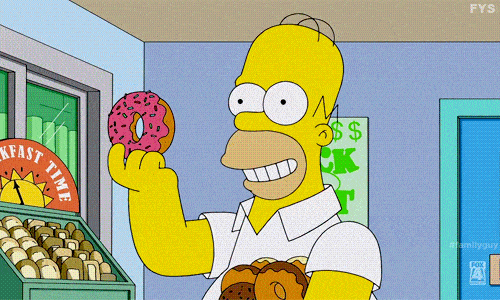
Let’s keep going.
Let’s say you hit your local gym a few times a week for strength training practice. And on your off days, you do a little yoga and take walks. This will push you into the “Moderately Active” category.
We take your BMR of 1,882 and multiply it by 1.55 to get a TDEE of 2,917.
The difference between Sedentary and Moderately Active would be 659 calories.
That’s an extra meal’s worth of calories! Here are some examples of things that are roughly 650 calories:
A whole meal’s worth of Sicilian fish with sweet potatoes:

Or, one Big Mac® with Bacon:
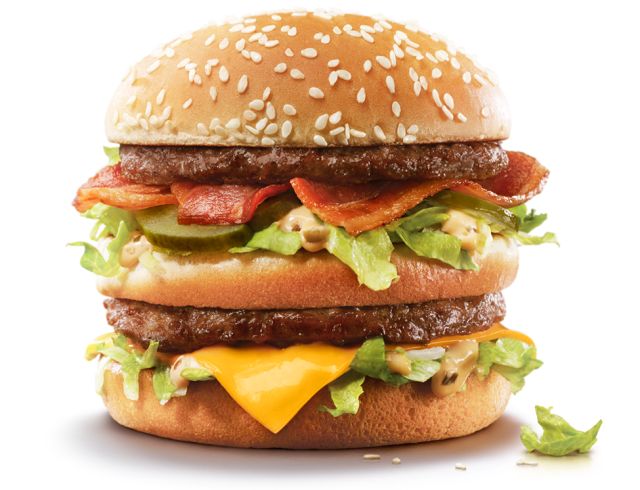
Or, one large Orange Dream Machine® from Jamba Juice:

People often UNDERestimate how many calories they consume, and then OVERestimate how much exercise they’re doing.
This is why Activity Level could be a “trap” when doing TDEE calculations!

WHAT SHOULD MY ESTIMATED ACTIVITY LEVEL BE?
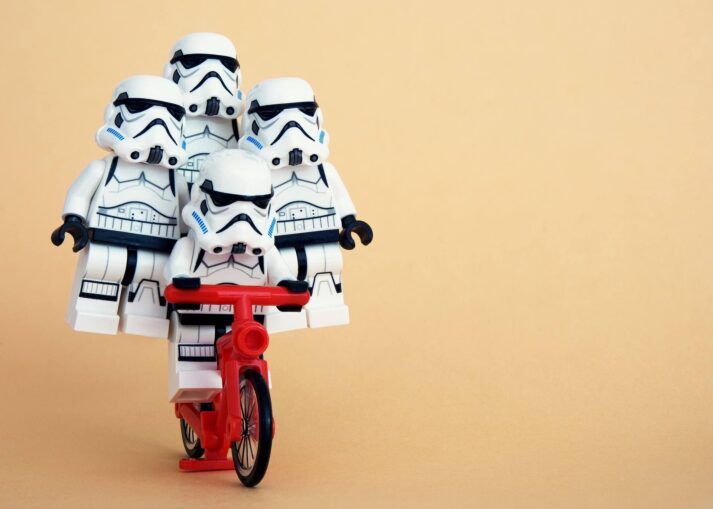
We people are notoriously bad at estimating our Activity Level.
We’re also terrible at tracking calories accurately and almost always underestimate (often by as much as 30-50%+ percent).
Study after study demonstrates that people evaluate their movement and exercise greater than what it actually is.[3]
We think we’re working out “intensely” for 60 minutes. However, when researchers look at stuff like heart rate, VO2 max, and calories burned, they determine that we actually only exercised “moderately.”
What’s this mean for you? If your goal is weight loss, pick an Activity Level below your initial guess.
Take our predisposition to overestimate Activity Level and grab the one beneath it.
Instead of “Moderately Active” pick “Lightly Active.”
This will give you a more accurate estimate of your caloric needs, and give you a larger margin for error when trying to lose weight!
The other thing to consider would be strength training.
As we mention in our “Lose Weight and Build Muscle” article, strength training requires a lot of calories out of your body, not only for the exercise itself, but also for rebuilding your muscle too.
In general, consider strength training to be “vigorous exercise,” which we highlighted above. If it takes 30 mins of walking a day to be “Lightly Active,” 15 minutes of daily strength training would roughly be equivalent.
If estimating your Activity Level and TDEE is starting to freak you out:
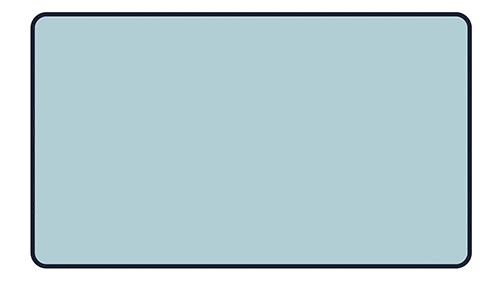
Trying to pick and calculate the right amount of calories to consume can be stressful. Especially if you’ve had trouble losing weight in the past. And that’s just the math part – we haven’t even got to the psychological part about how delicious pizza and ice cream are.
It’s actually the reason we created our uber-popular 1-on-1 Coaching Program. We sought to take all the guesswork out of getting in shape, by creating a program to tell you exactly what to do.
If you’re trying to lose weight, adjust your diet, or start a strength training practice, we can help! We work with busy people just like you level up their lives in a permanent and sustainable fashion. If you’d like to learn more about it, click on the big image below:
USING BMR AND TDEE FOR WEIGHT LOSS
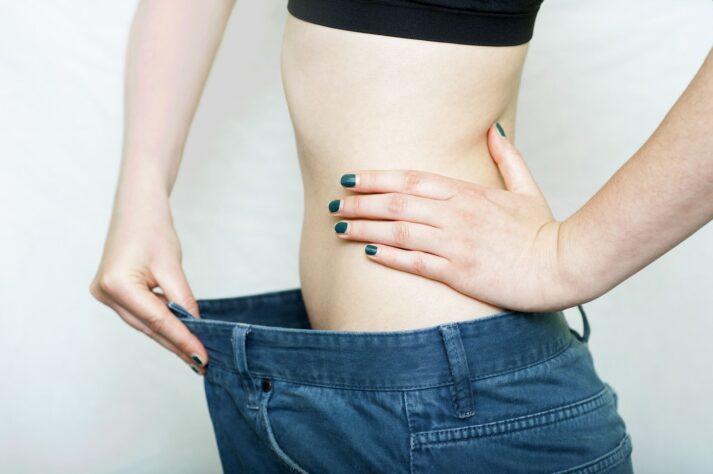
If you’ve read this far into the article, I imagine you are interested in learning your Total Daily Energy Expenditure for weight loss.
I also imagine you support my belief that The Shawshank Redemption is the best movie ever made:

I started this article by stating that if you are having trouble losing weight, it’s because you are eating too many calories.
The TDEE we calculated above will give us a good estimate of calories you require each day – if your scale is staying constant: congrats! You found your ‘calorie equilibrium.’ This means your body burns just as many calories as you consume each day.
However, I’m going to guess you’re here because your goal is to see the scale go down!
To really be able to utilize this number, we also need to have an idea on the number of calories we are consuming. Without knowing this, the TDEE is really just an arbitrary number.
Many would say the easiest way to assess and track calories consumed is with an app. We live in the future. Use a smartphone and download one of the following:
- My Fitness Pal. The gold standard of calorie counting apps. It’s also the most popular, supporting the largest food database in the game. Plus it can download recipes from the internet and provide an estimate of calories.
- FatSecret. Basic, simple, and free, FatSecret is a great calorie tracker. It’ll allow you to connect with other users, plus it’s got a barcode scanner for caloric content from labels. Super nifty.
- Lose it! Another free calorie counting app, focusing more on goal setting. Additionally, the Snap It™ feature lets you use pictures for data input. Double nifty.
You don’t have to use the app forever. A solid week’s worth of data will help you get a sense of the food you are consuming, especially if you eat roughly the same food each day. You can then compare this to your TDEE.
If you’re trying to lose weight, you need to have your calories consumed less than your TDEE on average.
Here are some numbers to think about: 3,500 calories equals roughly one pound of fat. There are seven days in a week. If you want to lose one pound of body fat in a week (a sustainable goal for some), you need to create a caloric deficit of 500 calories a day: either through consuming 500 fewer calories, burning 500 more calories, or a combination of the two.
Let’s imagine that your TDEE is 2,500. This would mean you’d have to consume around 2,000 calories a day to lose around a pound per week.
As we discuss to great detail in our “Why Can’t I Lose Weight” guide, sustained weight loss is largely a result of controlling the first half of the equation: “calories in.”
If you’ll remember, your BMR is about two-thirds of the total calories used, independent of movement. And most people overestimate exercise and underestimate consumption.
So controlling calories in is the most effective way to sustain weight loss.
Said another way, it’s much more difficult to increase your Activity Level than it is to reduce the calories you consume.
What’s the easiest way to eat fewer calories consistently? By eating REAL food.
Why? Because real foods are more likely to fill you up and satisfy your hunger while also keeping you under your calorie intake goal for the day!
MOVING TOWARDS A HEALTHIER WAY OF EATING

The Nerd Fitness philosophy on diet can be written in three words: Eat REAL food.
I lay it all out in our Beginner’s Guide to Healthy Eating, but you’re smart – you know what real food is:
Food that grew in the ground, on a tree, ran on the land, swam in the sea, or flew through the air. Meat, fish, eggs, vegetables, fruits, nuts are all great examples of REAL food.
This is what you should be eating more of.
The fine folks at WiseGEEK did an awesome post where they took pictures of what 200 calories of a certain food looks like.
200 calories of broccoli gets you enough broccoli to fill up an entire plate:
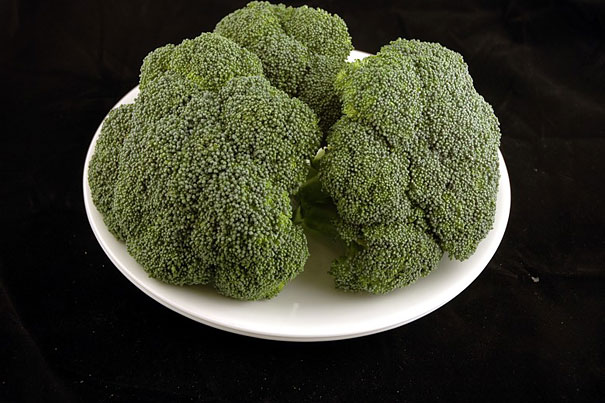
Or half a Snickers bar:
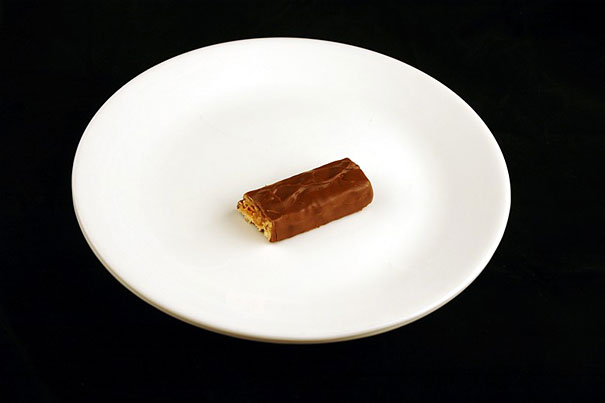
Yeah…
What I’m saying is by eating REAL food, you have a MUCH higher margin for error to stay under your calorie goal for the day.
If you “accidentally overeat Broccoli,” you might accidentally eat an additional 50 calories. If you accidentally overeat candy or soda or processed foods, you can consume an extra 500+ calories without feeling satiated or content.
If you want to create a caloric deficit consistently, REAL food is the answer. Before you get all huffy, I know a Snickers bar is way more delicious than broccoli – it was designed in a lab by scientists to be AMAZING!
I’m not gonna tell you to never eat a Snickers ever again either. Instead, you need to start being proactive about your food choices. If you’re gonna eat a Snickers, just plan for it (or adjust after) by reducing your calorie intake elsewhere.
If the scale isn’t budging – you’re still eating too much!
SHOULD I DO KETO OR PALEO FOR WEIGHT LOSS? WHAT’S THE BEST DIET

Should you do the Mediterranean Diet? Keto? Vegan? Paleo?
Maybe.
They all follow the same premise: by changing the foods you eat, you’re more likely than not to eat a caloric deficit without a struggle. Certain people respond better to certain diets than others.
So yes, any of those diets can help you lose weight – but you need to stick with the changes permanently to make the results stick permanently!
I personally follow a mental model diet, that focuses on real food all the time, and occasionally includes some junk food:
Minimize processed food – they’re designed for you to overeat them. Take a look again at that Snickers bar. Do you really think you’d only eat half of one to stick to 200 calories? Of course not. This argument is more or less the rationale for following a paleo diet.
Eat veggies. Vegetables are nutrient dense and light on calories. Because of all the fiber, they are also tough to overeat. Imagine eating all that broccoli. Are you going for seconds? Probably not. So eat your veggies to help keep you full. Hate vegetables? I once was like you. Read how I turned it around here.
Be wary of liquid calories. Cut back on soda, juices, smoothies, and any beverage with calories. Even most coffee orders (with sugar, cream, etc.) will have a ton of hidden calories. All these drinks are sugar bombs since there is no fiber to balance out all the carbs you are consuming. Stick to water, and unsweetened tea or coffee. Here are our thoughts on diet soda.
Prioritize protein. When your body heals itself, like after exercise, your body uses protein as the building block of muscle rebuilding. Outside of repairing your body, protein will also work to keep you full and satiated: 400 calories of chicken will leave you wayyy more full than 400 calories worth of Gatorade.[4] If you prioritize protein on your plate, you’ll be doing a lot of the heavy lifting on proper nutrition. Some great sources of protein include chicken, eggs, beef, pork, fish, nuts, legumes, quinoa, and most dairy products.
These four points will help you on your journey to create a caloric deficit.
Disclaimer: this is all easier said than done. After all, 70% of the country is overweight. Don’t worry though, because most of them don’t read Nerd Fitness. You do. This is like a strategy guide for life.
If you’re struggling with portion control and challenges, jump fully into the NF community. We cover human behavior and psychology to help you improve your environment, fix your habit building, and how to surround yourself with people that make you better (including our free message board community).
We’ve helped thousands of people like you here at NF, and we really focus on nutrition.
Like we said, it’s 90% of the battle!
It’s why we created our 10-level nutritional system. Each level gets a bit more challenging and healthier, but you can progress at your own speed to make your changes stick!
The name of the game here at Nerd Fitness is “consistency.”
You can download our 10-Level Nutrition Guide when you sign up in the box right here:
- Follow our 10-level nutrition system at your own pace
- What you need to know about weight loss and healthy eating
- 3 Simple rules we follow every day to stay on target
HERE’S WHAT TO DO TO LOSE WEIGHT WITH YOUR TDEE

Let’s recap this whole article for you, with some actionable steps:
- Determine your BMR and TDEE. This will be critical for computing your caloric deficit. They’re good numbers to keep in mind during the whole experiment. Calculate your TDEE here.
- Track everything, as is, for one week. Log everything you eat. No judgment. If you eat five slices of pizza in a night, count every slice. This step alone has helped many rebels turn their lives around. Consider a food tracking app or online tracker to educate yourself!
- Compare numbers. Where is your current caloric intake at? How does this compare against your TDEE? If your intake is higher than your TDEE, you’re likely gaining body fat. We want to flip the equation.
- Create a caloric deficit. The easiest and most sustainable way to do this is to eat REAL food. Sorry. Steve is going to tough love you on this one. And remember, a 500 calorie deficit a day could help you lose one pound of body fat in a week. REAL food is the easiest way to achieve this.
- Track progress. Continue to track caloric intake to ensure you expend more calories than you consume.
That’s it.
You can do this. I know you can because many of our readers have done it themselves.
However, I won’t lie to you, it’s not easy. Human biology is working against you.
But again, it is totally doable.
As I started this article off, knowledge is power. I hope you calculate your calorie requirements today and use this information to make actionable changes.
Knowing your caloric requirements is a great first step for a weight loss journey. You’re on the right track.
For the Rebellion!
-Steve
PS: If you want any help on the way, I’ll remind you of the Nerd Fitness Coaching Program. We can help you calculate your Total Daily Energy Expenditure and create a workable plan to keep your calories under it.
If you want to learn more, schedule a free call with our team to see if we are a good fit for each other, by clicking the image below:
PPS: Seriously, how great is The Shawshank Redemption? I could quote that movie all day long.
If you don’t agree…
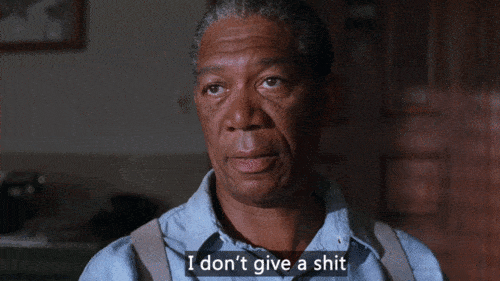
###
All photo citations can be found right here.[5]


No comments:
Post a Comment